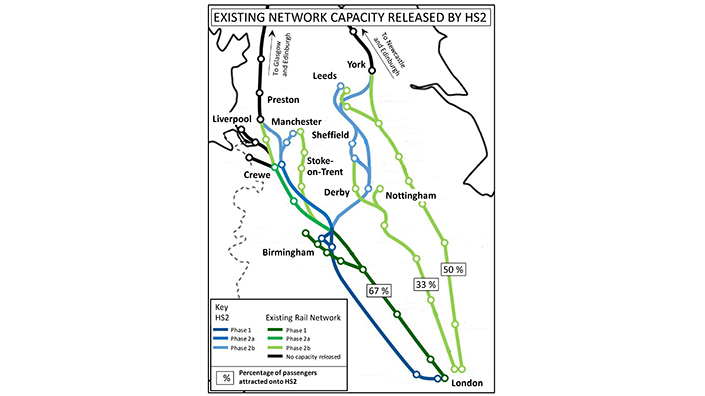Articles
Now high-speed trains run smoothly at 200mph, with a world record of 357mph achieved in tests.
A £2.75bn tender for the provision and maintenance of 54 high-speed trains for HS2 is being considered by suppliers who will soon submit their bids. These trains will have a maximum speed of 225mph and will be 200m long. In a two-unit formation they will provide 1,100 seats.
The new trains will run on the existing railway and on HS2 phase one, the high-speed line from London Euston which will join the West Coast Main Line (WCML) near Lichfield with a spur to Birmingham. Its planned 2026 opening will see journeys between London and Glasgow, Manchester, Liverpool and Birmingham reduced by 20 minutes.
HS2 will award its train contract early next year. It will require suppliers to use yet-to-be developed technologies, particularly in respect of passenger experience. This will include wayfinding and coach design to ensure a two-minute dwell time at intermediate stations.
On HS2 lines where the platform height will be 1,115mm, this, together with a deployable ‘bridge’ at each train door, will give virtually level gap-free access. Trains on conventional lines will have retractable steps.
Wide range of benefits
Although MPs voted overwhelmingly in favour of HS2 phase one, polls indicate that the line lacks public support. Many consider it to be a vanity project and offer comments such as “why spend billions to save a few minutes between London and Birmingham?” or say the money would be better spent on the existing network. This indicates that HS2’s benefits should be better promoted.
Over the past 20 years rail passenger traffic has doubled, and it seems certain to further increase. When fully complete in 2033, HS2 will provide a step change in capacity. It will connect 30 million people and eight of Britain’s 10 largest cities and call at over 25 stations. The alternative of increasing capacity by giving existing lines additional tracks would be hugely disruptive and probably cost about the same.
So HS2 phase one is not just a line to Birmingham. Once completed, only three of its 10 trains per hour from London will go to Birmingham. It is more meaningful to consider phase one as a bypass for the first 120 miles of the WCML. It will be the railway equivalent of the first section of M1 motorway, although a railway requires less land-take.
The extra capacity released will provide Euston with 11,300 peak-hour commuter seats compared with the present 6,400 seats. It will also provide more freight train paths.
After 2033, HS2 will serve Manchester and Leeds and bypass 190 miles of the WCML and 179 miles of the East Coast Main Line (ECML). Its 18 trains an hour from London will then release capacity on the WCML, ECML and Midland Main Lines.

Beats overcrowding
HS2 will be a high-capacity railway as it will operate on a dedicated route with all trains having the same performance characteristics. In contrast, capacity is significantly less on a mixed-traffic railway where trains travel at different speeds.
By 2033 HS2 plans to deliver 351 miles of high-speed railway and 160 trains at a cost of £56bn. It will carry 300,000 passengers on routes to all major cities north of London. Without this boost to capacity, predictions indicate that crowding will be untenable.
The project also offers wider economic benefits. The world’s 20,000 miles of high-speed rail have been shown to accelerate the pace of economic growth.
HS2’s high cost should be subject to scrutiny. However, any evaluation must consider all its benefits and the cost of not providing the required step change in capacity.
Content published by Professional Engineering does not necessarily represent the views of the Institution of Mechanical Engineers.